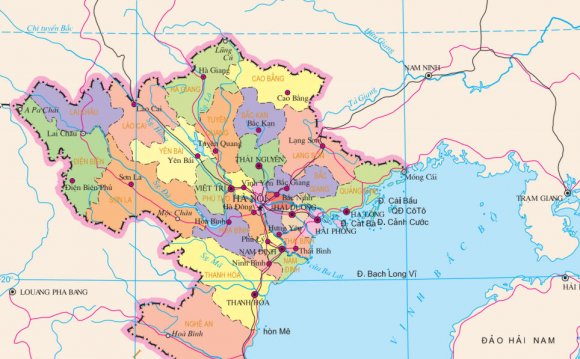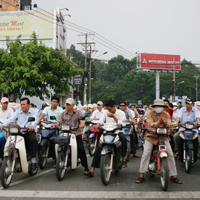
 Vietnam features among fastest rates of urbanization in the world, with almost half the united states’s populace anticipated to be staying in urban centers by 2030. While significantly more than two-thirds of the population nonetheless live and work in provincial cities and villages, the east-coast locations of Hanoi, Ho Chi Minh, Danang and Haiphong tend to be growing quickly as a result of the employment opportunities having arisen from Vietnam’s entry in to the World Trade company and its consequent integration in to the international economic climate.
Vietnam features among fastest rates of urbanization in the world, with almost half the united states’s populace anticipated to be staying in urban centers by 2030. While significantly more than two-thirds of the population nonetheless live and work in provincial cities and villages, the east-coast locations of Hanoi, Ho Chi Minh, Danang and Haiphong tend to be growing quickly as a result of the employment opportunities having arisen from Vietnam’s entry in to the World Trade company and its consequent integration in to the international economic climate.
Ho Chi Minh City is located in the south of Vietnam and is area of the large Mekong River Delta. After reunification in 1976, the city ended up being rebranded and established to incorporate the former Saigon and surrounding districts. It's the financial and monetary hub of Vietnam and consistently entice migrants from the provinces, leading to rapid population growth. Aided by the current expansion of a free-market system, many international and neighborhood businesses and services are located in the town, rapidly changing the skyline. In 2009 the town’s official population was 5, 929, 479 although unofficial populace is predicted is over eight million people. This disparity between these numbers is a result of the advanced level of unregistered rural–urban migration therefore the scatter of settlement, housing and business beyond official analytical boundaries.
Urban poverty is on the rise in Vietnam. Many impoverishment is targeted in rural places, the proportion in urban centers is growing as Vietnam moves through dual change from outlying to metropolitan, and from a planned to market economy. Residing conditions have deteriorated for all municipal servants have been made redundant within the latter change along with to get employment available in the market system. The increasing amounts of unregistered outlying migrants going to cities lack access to personal services and face unstable employment and housing with about 300, 000 individuals surviving in slums in Ho Chi Minh City. Land rates increased by over 500 percent in the 1990s, which makes it hard for either the federal government or personal industry to redress housing shortages.
The nationwide metropolitan development strategy is targeted on these problems and includes activities directed at: reducing densities in urban cores of big metropolitan areas and increasing peri-urban densities; lowering loss of prime farming land caused by poorly handled peri-urban development; relocating polluting industrial facilities from inner towns and cities to exterior areas; stemming squatter settlements and implementing steps to improve the way to obtain metropolitan housing; and enhancing the provision of urban solutions, especially water, sanitation, waste administration and trains and buses.
The Mekong Delta is probably the world’s most threatened areas from international environment change and faces a significant risk from sea-level increase and weather change induced disasters. With an anticipated populace growth Ho Chi Minh City deals with increasing densification and overcrowding associated with the inner-city districts with development into surrounding areas, usually by reclaiming land through the swamps that characterize the location regarding the area. With all the encroaching town, the continuing future of this ecosystem seems uncertain.
Vietnam is a key focus of RMIT University and remains a significant emphasis for the Institute. The worldwide Cities Institute makes an important dedication to research in Vietnam. Crucial partnerships through the Vietnam Academy of personal Sciences as well as the Vietnam Green Building Council. The task of Global Cities Institute in Vietnam is led by John Fien and Ngan Collins.
| Projects |
|
The recommended project is within conjunction because of the Climate Change Adaptation programme of this worldwide Cities Institute and in relationship because of the Viet Nam Green Building Council. VGBC-GCI research collaboration will speed the development of sustainable/adaptive engineering and structure in Viet Nam. There are two main initial stage I elements which will create peer-reviewed publications and trigger financing from a variety of organizations, permitting extension and amplification. |
YOU MIGHT ALSO LIKE












